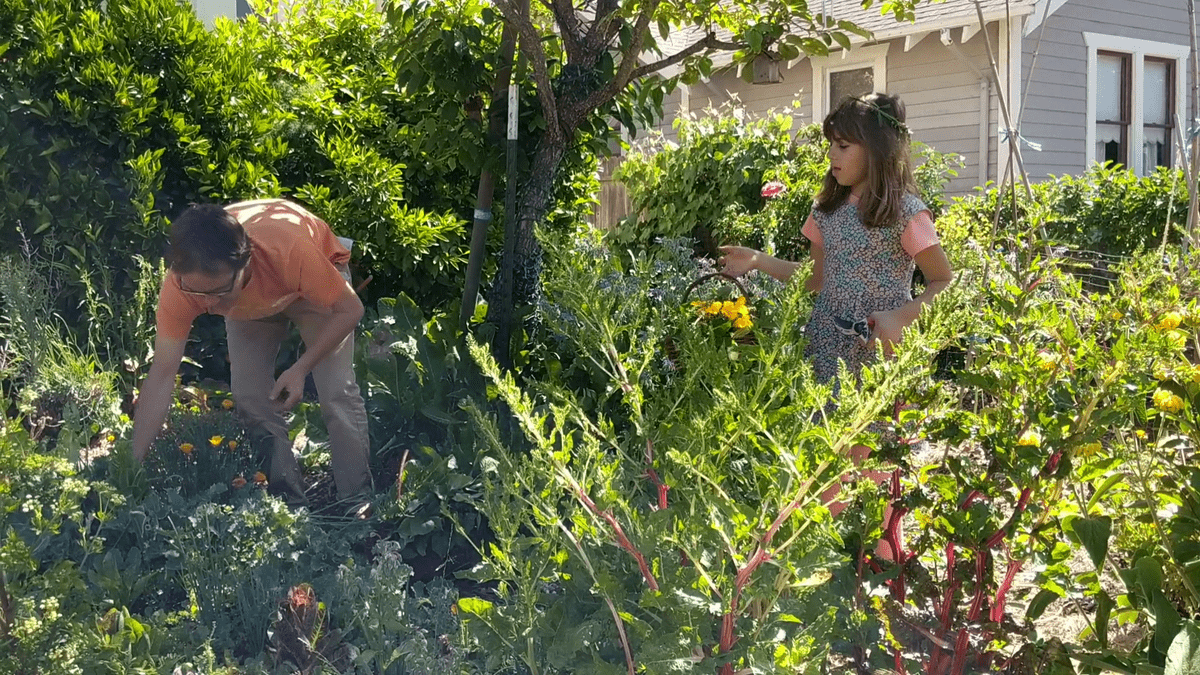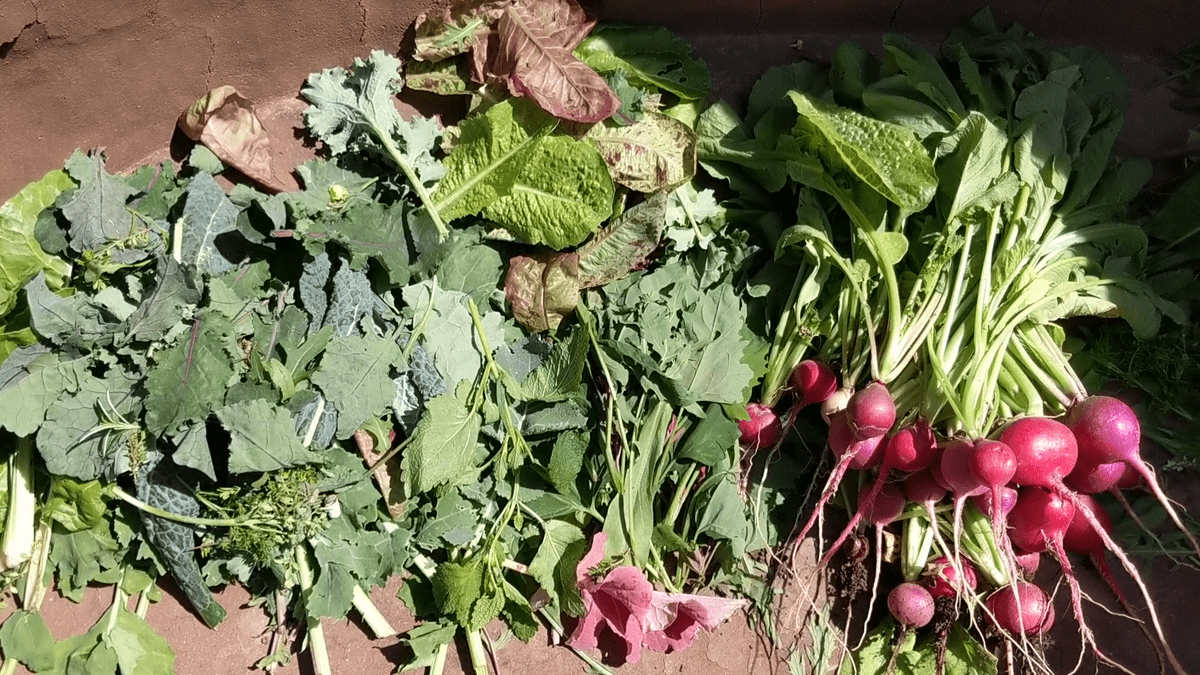Step 1: Give thanks! Harvesting is both a give and take relationship, so much of what you collect from your garden depends on what you put in. Give thanks for the bounty in whichever way makes sense and be sure to share when you have excess.
Step 2: Reap what you sow! Harvest leafy greens such as kale, lettuce, and swiss chard by using a sharp knife to cut off the outer leaves at the base of the plant. Leave enough leaves so the plant can continue regenerating. Harvest perennial fruits by gently twisting fruit from stem. If this is not possible, use a sharp pair of scissors to cut fruit just above stem.Harvest flowers by cutting or pinching just below the flower head. For herbs, harvest the stalk for easier drying.
Step 3: Process your bounty! Separate roots such as turnips, beets, carrots, and radishes from their leaves when storing. This prolongs the life of the root. Most fruits and vegetables stay fresher longer if you wait to wash them until just before eating. Store in refrigerator (with the exception of tomatoes and strawberries) until you’re ready to prepare. When drying herbs and edible flowers for medicine, tea or seasoning, be sure to provide enough air circulation to avoid mold and keep out of direct sunlight to retain potency. Once dry, store herbs in glass jars or plastic bags and use within one year for best flavor.
Step 4: Enjoy your harvest! Get creative by steaming or sauteing beet and turnip greens. Radish greens are edible, but their texture makes them less desirable. Carrot greens are also edible and can be enjoyed in a pesto or chimichurri sauce. Add dried herbs and edible flower petals to table salt for a more exciting seasoning, or make your own tea blend from what you find in your garden.





